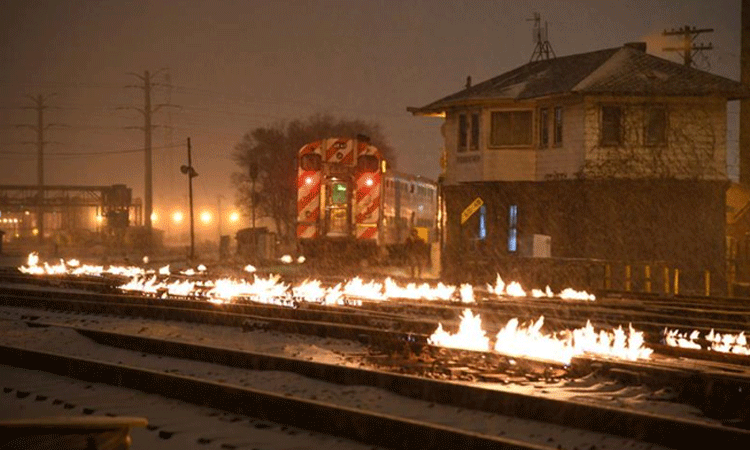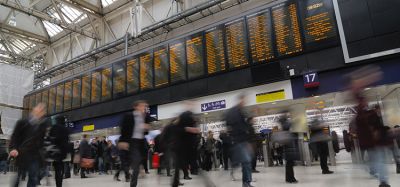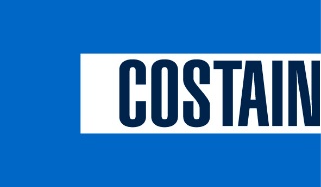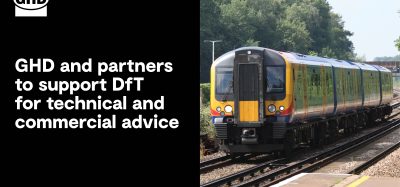Fire used to melt ice on Chicago train tracks during polar vortex
Posted: 31 January 2019 | Global Railway Review | No comments yet
On the commuter rail tracks in Chicago, fire is being used against ice to keep trains rolling as a polar vortex causes temperatures to drop to as low as -46C across the Midwest U.S.


Credit: www.metrarail.com
One particular issue caused by the extreme winter weather is snow- and ice-clogged switch points which can bring several trains to a halt until the blockage is cleared. To combat this at A-2, Chicago’s busiest interlocking, Chicago’s commuter rail agency, Metra, is using open flames to help keep trains moving.
The flames come from a gas-fed system that runs adjacent to the rail, which generates heat on the critical areas where the switches are supposed to make contact. According to Metra, without that contact, the switches default to a ‘fail-safe’ mode and trains that need to pass through the interlocking are forced to wait until the switches make contact with the rail and complete an electric circuit.
Although the heaters help to keep the switches clear, sometimes the snow and ice falls too fast or falls from the underside of a passing train and the switches need to be cleared manually with brooms, shovels or picks.
Other forms of switch heaters are also used by Metra. In its yards, Calrod tubular heaters use electricity to generate radiant heat at switch points and hot air blowers (which use a combination of gas and electricity) clear other switches in other parts of Metra’s system. However, while the Calrod and hot air blowers are prefabricated systems that Metra purchased, the gas-fed flames at A-2 were customised for that interlocking.
Metra’s Engineering Director, John Meyer, said that while the hot air blowers are ideal for heating switch points, they aren’t used at A-2 due to the density of the switches there. “With the configuration at A-2, there’s no way to put them in the middle of the plant – you’d have to put pipes across all the tracks and then they’d lose heat.”
According to Metra, before the installation of the gas-fed heaters, maintainers relied on more interesting, and far more dangerous, systems of melting snow and ice. One method was to fill ‘smudge pots’ with kerosene and apply them in the spaces between the track ties and light them, which was all done by hand.
John said: “We poured it in a two-gallon can, poured it out, and threw a match in it, and it would start a fire along all the rails. We’re talking in the mid-1970s. Nowadays you’d get in big trouble doing that!”
A release by Metra states that although the fires at A-2 are far safer than the days of smudge pots, they still cause some damage to the ties, with several needing to be replaced every year due to heat damage. But ultimately, there is far more control over the flames, making them not only safe but effective. Maintainers light the heaters by hand and can moderate the flow of gas, which makes the flames larger or smaller, depending on need.
Additionally, at least one maintainer is stationed at the interlocking every second the heaters are lit in order to monitor the flames. Diesel fuel combusts only with pressure and heat, not open flames. Therefore, it is completely safe to operate rolling stock over the switch heaters.
Related topics
Adverse Weather, Infrastructure Developments, Track Systems, Track/Infrastructure Maintenance & Engineering








